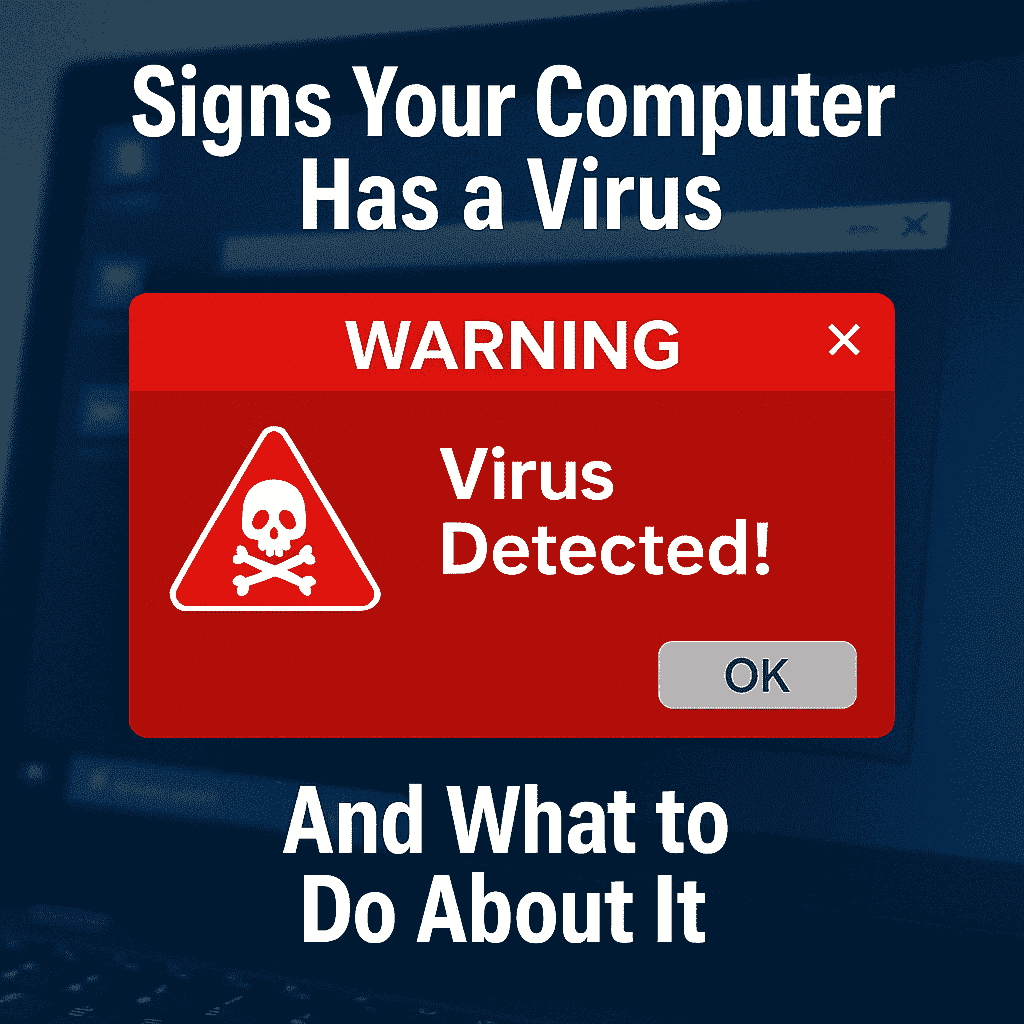
Is your computer acting weird lately? You might be dealing with a virus or malware. In 2025, even the best antivirus software can’t always catch everything, especially if you’re browsing without care. Whether you’re using a Windows PC or a Mac, viruses can sneak in through dodgy downloads, fake emails, or even social media links.
Top Signs Your Computer Has a Virus
Here’s how to tell if your PC is infected:
1. Sluggish Performance
Your once-speedy system now feels like it’s stuck in molasses. Viruses often use your computer’s resources in the background, slowing everything down.
2. Endless Pop-ups or Ads
Getting bombarded with ads—even when your browser is closed? That’s a classic sign of adware or malware lurking in your system.
3. Unfamiliar Programs or Toolbars
Noticed weird programs installed or strange toolbars in your browser? These can come bundled with viruses and spyware.
4. Frequent Crashes or Blue Screens
A stable computer doesn’t crash randomly. If you’re seeing the dreaded Blue Screen of Death more often, malware might be the culprit.
5. Files That Suddenly Disappear or Won’t Open
Ransomware and viruses can delete or encrypt your files. If things are going missing or acting strange, don’t ignore it.
6. High Network or Disk Usage
Is your fan spinning like crazy and Task Manager showing 90%+ usage for no reason? That’s often malware calling home or mining crypto in the background.
What to Do If You Suspect a Virus
Here’s your action plan to get things back under control:
✅ Step 1: Disconnect from the Internet
This stops the virus from spreading or sending out your data.
✅ Step 2: Boot Into Safe Mode
Restart your PC in Safe Mode so only essential processes run. This can prevent malware from launching automatically.
✅ Step 3: Run a Full Antivirus Scan
Use trusted software like Malwarebytes, Windows Defender, or Bitdefender to perform a deep system scan.
✅ Step 4: Remove Suspicious Programs
Head to your installed apps list and uninstall anything you don’t recognise or didn’t install intentionally.
✅ Step 5: Clear Browser Cache and Reset Settings
Malicious extensions and hijackers often live in your browser. Reset it to defaults and remove unknown extensions.
✅ Step 6: Update Everything
Make sure Windows, your antivirus, and your software are all up to date to patch any security holes.
You might be interested in: How to Remove Malware Without Formatting
Bonus Tip: Prevention Is Key
- Never click unknown links or download files from sketchy websites.
- Use a password manager and enable 2FA (two-factor authentication).
- Keep your software and OS updated regularly.
- Backup your data at least once a week—cloud or external drive.
If you’re unsure whether you’re infected or not, it’s always better to get a professional diagnosis. Viruses can disguise themselves well, and what you don’t see can hurt your system—and your data.
Need Help in Canberra?
We clean up infected PCs, secure your data, and restore speed—without losing your precious files. Call Local Geeks today!